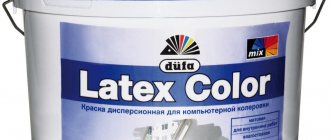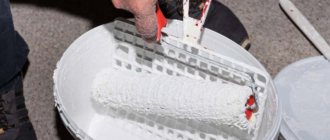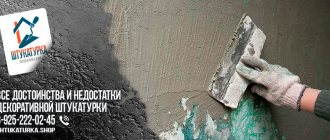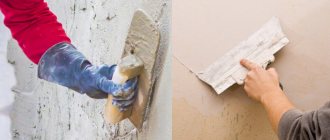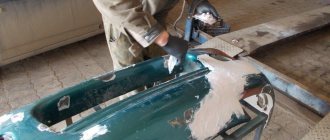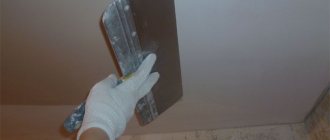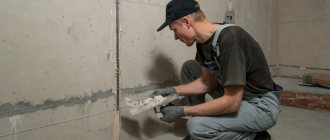To form an initial opinion, you can look at the models presented on the mix-trade website. You are sure to find something for yourself and at affordable prices.
When choosing a plastering machine, you need to understand for what purposes and for what volumes of work you need it.
Almost all plastering units are multifunctional - they can not only plaster, but also make self-leveling floors, putty, paint, fill voids, and pump adhesive mixtures. It all depends on the model you choose.
1) Price of plastering station
First of all, you need to understand what price you are expecting. German and Italian cars have proven themselves well in the market, but their cost has increased almost 1.5 - 2 times over the past three years. Not everyone can afford such equipment in difficult times of crisis. Definitely for sure if you have 450,000 rubles available. buy brands Pft, m tec, putzmeister, Kaleta, Turbosol, Uelzener, Putzknecht, Maltech.
The advantages of German and Italian stations are in expensive components that last for many years if used correctly. However, this is not always a plus. Sometimes it’s easier to take an available plastering station and replace the faulty parts after a year and a half. In the end, it will be much more profitable than immediately freezing that amount of money.
If you do not have such funds, then you can easily choose a good station from the available segment. The following brands can be distinguished: Novo, Rhythm, Serta Master, Hermes. We will talk about each in the following articles.
Stages of applying plaster using a plaster station
The application of plaster coating is carried out in several stages; let’s look at them in more detail.
Preparatory work
Grid installation. To improve the quality of the coating, a reinforcing mesh made of galvanized steel rod is fixed to the walls.
To improve the quality of the coating, reinforcing mesh is fixed to the walls.
Padding. One of the common construction operations is applying a layer of plaster to walls, ceilings, etc. In fact, this is a labor-intensive operation that takes a lot of effort and time. This is especially true for buildings with large areas. Some time ago, construction equipment companies launched stationary and mobile plastering stations onto the market. Let's consider their classification, principle of operation and the difference between automated and manual application of plaster.
For surfaces that actively absorb moisture, soils that form a protective film are used. It is designed to prevent cracking of the plaster layer.
For surfaces that actively absorb moisture, soils that form a protective film are used.
Lighthouses are zinc-coated profiles installed vertically or horizontally. A laser level is used to install them.
Lighthouses are zinc-coated profiles installed vertically or horizontally.
Direct application
This is the main stage of plastering the surface. To perform this work, a plastering unit is used, the solution obtained in it under pressure is applied to the surface to be treated.
The next operation is trimming the drying layer; to carry it out you will need to use the trapezoidal rule. To perform correct pruning, installed beacons are used. After trimming, the following operations are performed: removing beacons and grouting. At the customer's request, gloss can be applied to the plastered surface.
To perform this work, a plastering unit is used, the solution obtained in it under pressure is applied to the surface to be treated.
Drying the applied plaster
This is the last phase of plastering. The drying mode of the plaster is usually indicated in the packaging of the dry mixture. It was noted above that in the cold season it is permissible to use heating devices.
The drying mode of the plaster is usually indicated in the packaging of the dry mixture.
A few words in conclusion. Plastering equipment allows you not only to speed up the work on plastering a room, but also to ensure the proper quality of the coating.
2) Power and performance of the plastering machine
According to this criterion, we can divide all stations into two large groups: They operate on 220V and operate on 380V. There are also multi-voltage models. As a rule, 220V is easier to find on site, but 220V stations are considered more “capricious”, since in Russia the voltage is far from stable. The maximum electric motor for 220V is 3 kW. At multivoltage stations, when operating at 220, only half the drive power is used.
The productivity of stations at 380 is much higher; as a rule, such stations are large and bulky. They can only be transported in a truck. Therefore, such stations are considered industrial and it is not advisable to make small volumes at them. Motors of 3 kW and higher are installed on these. Up to 7.5 kW. As a rule, these models have d6-3 screw pairs.
If we talk about 220V plastering stations, then their productivity, of course, will be less, but they are easy to transport and operate. They apply the mixture twice as slowly as 3-phase stations, but maybe this will be enough for you? Then the models Ritm, Novo Gen3, Pft Ritmo L, Pft Ritmo M, M tec monomix, Serta Master are suitable for you.
Features of the equipment and rules for working with it
The features of the plastering station include the ability to produce solutions based on the use of different binders - cement, gypsum.
The features of the plastering station include the ability to produce solutions based on the use of different binders.
How does a mechanized assistant work?
The operation of the plastering machine must be carried out strictly according to the rules, in particular, maintenance must be carried out only after disconnecting from the network and completely stopping it. As a rule, the manual for using the plastering machine indicates both safety measures and the operating procedure of the station. By the way, it wouldn’t hurt to pay attention to the duration of the warranty service
If the solution is applied in winter, then it will be necessary to organize drying of the applied layer; for this, you can use heaters. Any type, with the exception of those using open fire. The plastering plant may only be operated by trained workers who have received appropriate instruction. Responsibility for trouble-free execution of work rests with the site foreman.
The plastering plant may only be operated by trained workers who have received appropriate instruction.
3) Cottage option or industrial station?
If you have taken a large object, for example a multi-storey building, then industrial-type stations such as Pft G4 will be more suitable for you. However, you can work with less powerful ones. However, if you work at small facilities, which is very important during a crisis. 220V stations are ideal for you.
They are easy to transport and powering them is not difficult. As a rule, these are modular-type stations (disassembled into 3 or more parts). They can be transported in passenger cars. Such a station can be raised to the second floor, since it weighs little.
Our specialists will select equipment specifically for you. Call and find out!
Rating of plastering stations: the best companies in the world
A list of the most popular equipment will help you make the right choice, the top three of which include the following modern brands:
- PFT is a productive and reliable equipment equipped with dust and water freezing protection devices. Can be used in winter. The line includes massive and compact models.
- Kaleta is a leader in the European and Russian markets, characterized by high quality solution preparation, ease of operation and maintenance, and an affordable price.
- Master is a popular equipment that can prepare adhesive mixtures, gypsum compositions and solutions for installing self-leveling floors. Easy to assemble and use.
Reviews about the station "Strodzstav SM 40"
This plastering station has positive reviews because it is capable of processing fairly large volumes of mixture. At the same time, the engine power is very good and amounts to 5 kW. The operating voltage of the device is 400 V. Thanks to this, the frequency of the plastering station reaches a maximum of 50 Hz. Among the disadvantages, many note the high electricity consumption.
However, in some cases the screw pump is unable to cope with high pressure. In general, the hose can withstand up to 0.3 MPa, but when fully loaded this may not be enough. Therefore, material should not be added to the edges of the container. Additionally, the owners noted the compact size of the device with a fairly large capacity. This plastering station has a height of 575 m, a width of 560 mm, and a length of 1570 mm. At the same time, when assembled, the unit weighs 120 kg.
Areas of application of SMN
Machine application stations have a wide range of applications:
We offer another option - instead of using plaster mortar, use machine-applied gypsum plaster mixtures. Yes, they are slightly more expensive than lime-sand mortars and this is their only drawback. When it is necessary to prepare walls for wallpapering, when using gypsum plaster mixtures, no additional putty is required, and if the mixtures are applied using plastering stations, the total cost of plastering work is often lower than when working with lime-sand mortar. The use of plastering stations allows you to plaster up to 200 m2 of walls in an eight-hour working day. In our work, we propose to use high-performance plastering stations from PFT, known throughout the world. This is the No. 1 plastering station in Europe G4, as well as the G5, which recently appeared on the Russian market, a more advanced and productive machine, which is also more convenient for transportation. Their productivity allows high-quality plastering of a three-room apartment in 2-3 days. Both of these machines, in addition to plastering work, allow you to perform self-leveling floors. In addition, only in our region we have a new product from PFT RITMO that allows both plastering and puttying; its small size and weight of less than 100 kg allow this machine to be used for small volumes of work. This machine fits in the trunk of a car and is ideal for small teams of 3-4 people. All this will make it possible to set the lowest prices for work performed and at the same time actively develop, receive profit and moral satisfaction from quickly and efficiently completed work.
MACHINE PLASTERING WORKS: HIGH QUALITY and SPEED OF WORK TECHNOLOGY FEATURES
- High precision and quality of plastering stations ensures true European quality. This installation is capable of working with solutions prepared from various dry mixtures (gypsum, gypsum-lime, sand-cement). The use of a plastering station has undeniable advantages:
- The high quality of the finished solution is ensured by the continuous supply of the dry mixture into a separate container, where mixing occurs until a homogeneous mass occurs.
- Precise control of the dry mix-water ratio remains constant, which is very difficult to achieve manually. By supplying the finished solution under pressure, high adhesion (adhesion, grip) to the surface being treated is ensured. The durability and strength of machine-made plaster increases.
- Continuous supply of large volumes of solution allows you to treat large areas.
- Machine plastering saves time and human labor.
- Construction mixtures for mechanical application are much cheaper.
MACHINE PLASTERING – TIME SAVING
- You won't have to count down the weeks until the renovation work begins. Immediately after receiving an order, the master goes to the site and assesses the upcoming scope of work and draws up an estimate. After partial payment, a team of specialists begins plastering work at your site within two working days. Competent guidance from the master and high productivity of plastering stations make it possible to achieve that the time for mechanized plastering work is reduced by 4 times compared to manual plastering.
MACHINE PLASTERING – COST SAVINGS
- When plastering by machine, the same amount of material is consumed as when applied by hand. The required amount of mortar is determined not by the method of application, but by the curvature of the walls.
- However, mixtures for mechanized plastering work are cheaper, which allows you to save money on the material.
- In addition, our company has long been cooperating with various suppliers of building materials, which allows us to purchase mixtures at wholesale prices. A flexible system of discount programs and our own freight transport make your costs even lower.
PRINCIPLES FOR SELECTING PLASTERING STATIONS
The increase in the volume of housing construction (both commercial and municipal) and industrial facilities, office premises puts in the first place the problem of the speed of completing work volumes and reducing the delivery time of objects. The use of dry building mixtures in mass construction, which guarantees the quality of finishing, requires the use of a mechanized method that ensures high performance: plastering, floor screeding, pumping of various solutions, lightweight concrete, fine-grained concrete, sand concrete, etc.
What to choose: a plastering station or a screw pump (mortar pump, concrete pump)? Equipment, which manufacturer is better to buy? What materials to work with, high-quality calibrated dry building mixtures of factory production for machine application or cheap multi-component mixtures consisting of sand and cement (M100, M150, M200, M300)? All these basic questions create certain rules when choosing equipment. Let's try to consider various situations at construction sites and derive rules for selecting equipment.
The most important question in choosing a plastering station (mortar pump, concrete pump, screw and piston pump) is the material you will use. We divide materials into 4 types:
- Dry construction mixtures, bagged at the manufacturer's factory for manual application (mixed manually in containers using various mixers or drills).
- Dry construction mixtures, bagged at the manufacturer's factory for machine application (mixed with plastering stations, mortar pumps and applied to the surface to be treated) with a maximum fraction of up to 4 mm.
- Mixtures obtained by mixing several components: for example, dry sand + dry cement and, in some cases, with the addition of lime to impart plasticity to the plaster mortar; the maximum grain fraction is up to 6 mm.
- Ready-made plaster or masonry mortar, sand concrete, transported in automixers from the mortar unit with a maximum grain fraction of up to 6 mm.
What types of plastering machines are there and how to work with them correctly
Automatic wall plastering is the process of applying a leveling or decorative layer of material using special equipment. Plastering machines themselves prepare the solution and spray it onto the surfaces being treated, and the worker only controls this process. Finishing work carried out using a plastering station is suitable for almost any construction or renovation project. This could be light cosmetic repairs in a small apartment, major work on leveling internal or external surfaces, and so on.
Models
Plastering stations of this brand are characterized by high productivity. This is largely due to the powerful compressors that are available in the devices. It should also be noted that they are quite easy to maintain. At the same time, cleaning the equipment is very convenient. The cases of many models are made of steel and are therefore resistant to corrosion.
Experts also note the ease of management. Manufacturers provide clear instructions for users. In general, according to the owners, it is possible to regulate the supply of solution without any extra effort.
